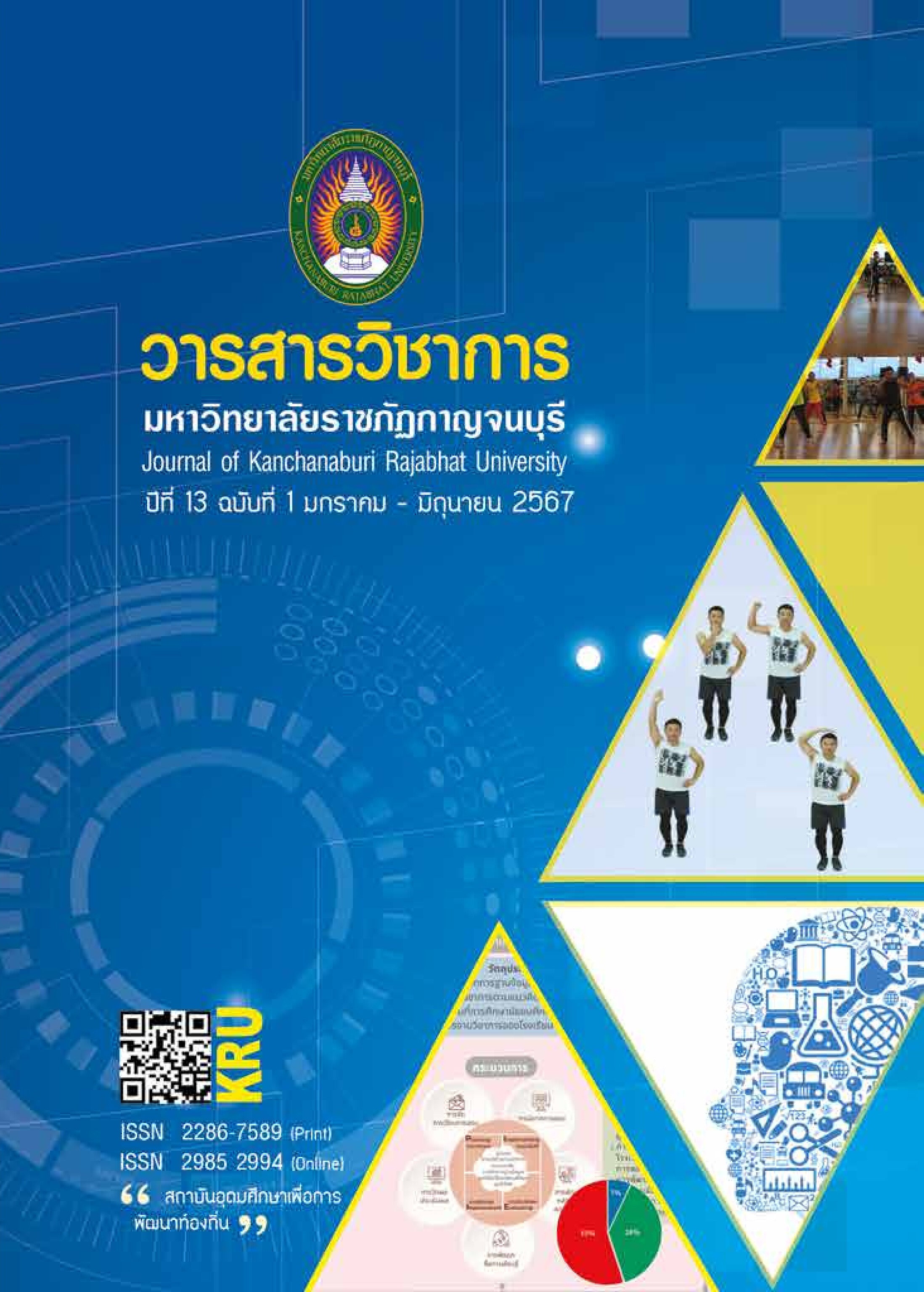เทคนิคการสื่อสารและการให้คิวในแอโรบิกดานซ์
Main Article Content
บทคัดย่อ
การสื่อสารและการให้คิวในแอโรบิกดานซ์เป็นหัวใจสำคัญในการสร้างสรรค์บรรยากาศการสอนให้เป็นไปอย่างสนุกสนาน วัตถุประสงค์ในการให้คิวเพื่อสร้างความเข้าใจร่วมกันระหว่างผู้นำแอโรบิกกับสมาชิกที่เข้าร่วมกิจกรรม การให้คิวผู้นำสามารถเลือกใช้เทคนิคในการให้จังหวะในรูปแบบสัญลักษณ์ คำพูด (Verbal cueing) หรือใช้ภาษากาย (Visual cueing) ก็ได้ การให้คิวการเคลื่อนที่หรือบอกท่าทางแต่ละรูปแบบควรอยู่ในช่วงของการเตรียมพร้อมในการเคลื่อนที่ในจังหวะ Pre cueing โดยจะมีการเคลื่อนที่ในจังหวะสุดท้ายเมื่อการให้คิวสิ้นสุดลง ประโยชน์ของการสื่อสารสัญลักษณ์ในการให้คิวด้วยภาษากายจะทำให้ผู้นำไม่จำเป็นต้องใช้การเปล่งเสียงที่ดังมากเกินไป แต่เมื่อผู้นำใช้วิธีการสื่อสารโดยให้คำสั่งควรเลือกใช้คำพูดซึ่งต้องให้คำสื่อสารขณะนั้นมีความสัมพันธ์กับจังหวะในห้องเพลงเพื่อบอกสัญลักษณ์หรือท่าทางให้มีการเคลื่อนที่หรือใช้ท่าทางให้ต่อเนื่องและผู้เรียนทุกคนสามารถปฏิบัติพร้อมกันได้อย่างราบรื่น ในกรณีที่ผู้นำที่มีประสบการณ์น้อยอาจต้องทำความเข้าใจและฝึกฝนการให้คำสั่งให้สัมพันธ์กับท่าทาง (Action cueing) เพื่อสร้างบุคลิกภาพที่เหมาะสม เมื่อมีความชำนาญแล้วให้เพิ่มเติมกลยุทธ์การสอนให้มีความหลากหลายโดยคำนึงถึงระดับความสามารถของผู้เรียนเป็นสำคัญ เทคนิคของการสร้างความหลากหลาย ได้แก่ การเพิ่มทิศทางการเคลื่อนที่ การเปลี่ยนข้างขวาและซ้าย การลดจังหวะให้น้อยลงเพื่อให้ชุดท่านั้นมีการเปลี่ยนท่าในจังหวะเร็วขึ้น เป็นต้น
Article Details

อนุญาตภายใต้เงื่อนไข Creative Commons Attribution-NonCommercial-NoDerivatives 4.0 International License.
เอกสารอ้างอิง
สุกัญญา พานิชเจริญนาม. (2546). แอโรบิกดานซ์สำหรับครูฝึก. กรุงเทพฯ: เอกสารอัดสำเนา.
Brehm B.A. (2004). Successful Fitness Motivation Strategies. Champaign, IL: Human Kinetics.
Campos, F., Simões, V., and Franco, S. (2015). Characterization and comparison of the participant's perception about the quality of the
fitness group exercise instructor, considering the practiced activity. Arena-Journal of Physical Activities, 4, 85-104.
Castaner, M.O. Camerino, M.T. Anguera, and G.K. Jonsson. (2010). Observing the paraverbal communicative style of expert and novice
PE teachers by means of SOCOP: A sequential analysis. Procedia-Social and Behavioral Sciences, 2 (2), 5162–5167.
Dail, T., and Melton, D. (2009). Developing Aerobic Dance Routines: A Method for Instructing Undergraduate Group Fitness Leaders.
Journal of Physical Education, Recreation & Dance, 80 (7), 23-41.
Grace DeSimone. (2012). ACSM’s Resources for the Group Exercise Instructor. 1st ed. Philadelphia: Lippincott Williams & Wilkins.
Ntoumanis, N., Thøgersen-Ntoumani, C.,Quested, E., and Hancox, J. (2017). The effects of training group exercise class instructors to
adopt a motivationally adaptive communication style. Scandinavian journal of medicine & science in sports, 27 (9), 1026-1034.
Riebe, D.A. (2012). Group Exercise Instruction: More Than Aerobic Dance. ACSM's Health & Fitness Journal, 16 (6), 34-35.
Stanish, H. I., McCubbin, J. A., Draheim, C. C., and van der Mars, H. (2001). Participation of adults with mental retardation in a video-and
leader-directed aerobic dance program. Adapted Physical Activity Quarterly, 18 (2), 142-155.
Weinberg R.S, and Gould D. (2019). Foundations of Sport and Exercise Psychology. 7ed. Illinois: Human Kinetics.


